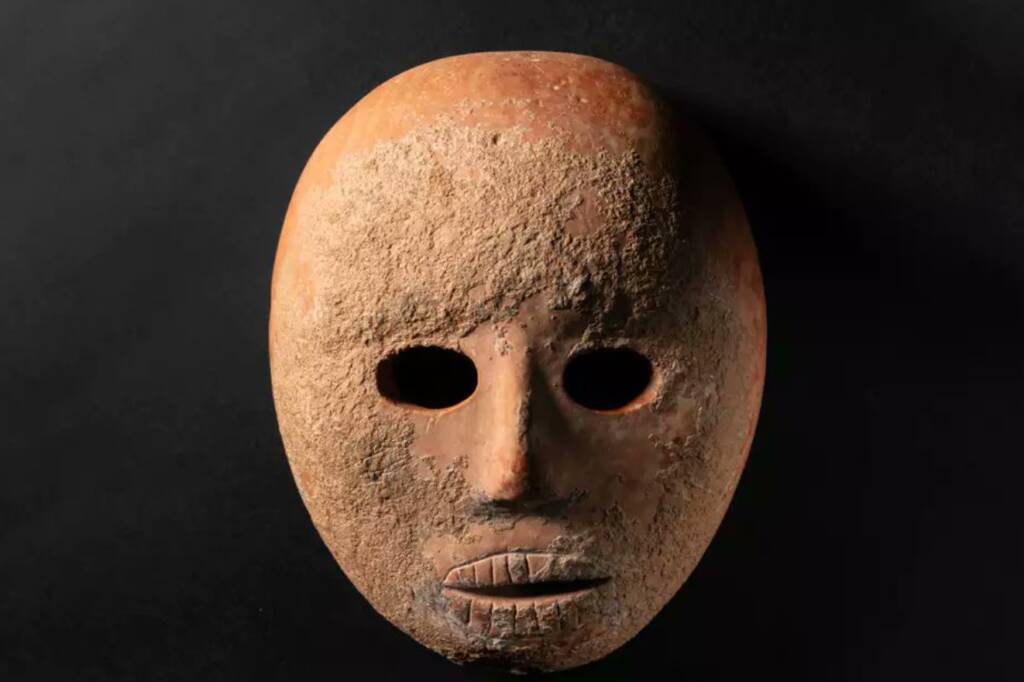The artifact is part of an exceptionally small and rare group of just 16 ancient stone masks known to exist worldwide.
By JNS
A rare and ancient stone mask dating back more than 9,500 years has been discovered on Mount Hebron, shedding new light on prehistoric religious practices in the area. The remarkable archaeological find will go on public display for the first time at the Israel Museum in Jerusalem.
The mask was uncovered by an archaeological team from the Civil Administration near the settlement of Pnei Hever. Made of dolomitic limestone, it has been dated to the Pre-Pottery Neolithic B period in the 8th millennium BCE.
The artifact is part of an exceptionally small and rare group of just 16 ancient stone masks known to exist worldwide. All were found in the confined areas of the Hebron Hills, the Judean Desert and across the Jordan River Valley.
This localized pattern strongly suggests the masks were part of a shared cult, ritual system or set of beliefs among the region’s inhabitants during that prehistoric era.
The newly discovered mask exhibits a remarkably refined design, with an emphasis on large eye sockets and an open mouth area. Notably, the mask’s teeth are carved in relief, likely intentionally crafted to resemble a human skull.
It also has four strategically placed tie holes that would have allowed it to be securely fastened to a person’s face or mounted on a pole during ceremonial rituals.
Leading archaeologists theorize the mask may have represented an ancient deified ancestor figure or primordial supernatural entity that held profound symbolic importance for the prehistoric population.
Its finely worked features and ritualistic purpose mark it as a highly significant religious artifact from an era about which relatively little is still known.
“This is an extraordinary discovery that reveals new insights into the spiritual and symbolic traditions of some of the world’s earliest Neolithic cultures in this region,” commented Elie Borowski, curator of prehistoric antiquities at the Israel Museum.
“The mask’s tomb context and skull-like aesthetic strongly suggest it had deeply sacred ceremonial purposes.”
In addition to unveiling the Hebron Hills mask, the Israel Museum also announced it will display for the first time decorative wall tiles excavated from the Tomb of David site on Jerusalem’s Mount Zion.
According to biblical tradition, the underground tomb is believed to be the burial place of King David.
The ornately patterned glazed tiles feature floral motifs characteristic of the Ottoman Imperial style and Iznik tile making.
They will be part of a new “Interwoven Vessels” exhibition bridging connections between ancient artifacts and Israeli art.
Do You Love Israel? Make a Donation - Show Your Support!
Donate to vital charities that help protect Israeli citizens and inspire millions around the world to support Israel too!
Now more than ever, Israel needs your help to fight and win the war -- including on the battlefield of public opinion.
Antisemitism, anti-Israel bias and boycotts are out of control. Israel's enemies are inciting terror and violence against innocent Israelis and Jews around the world. Help us fight back!
